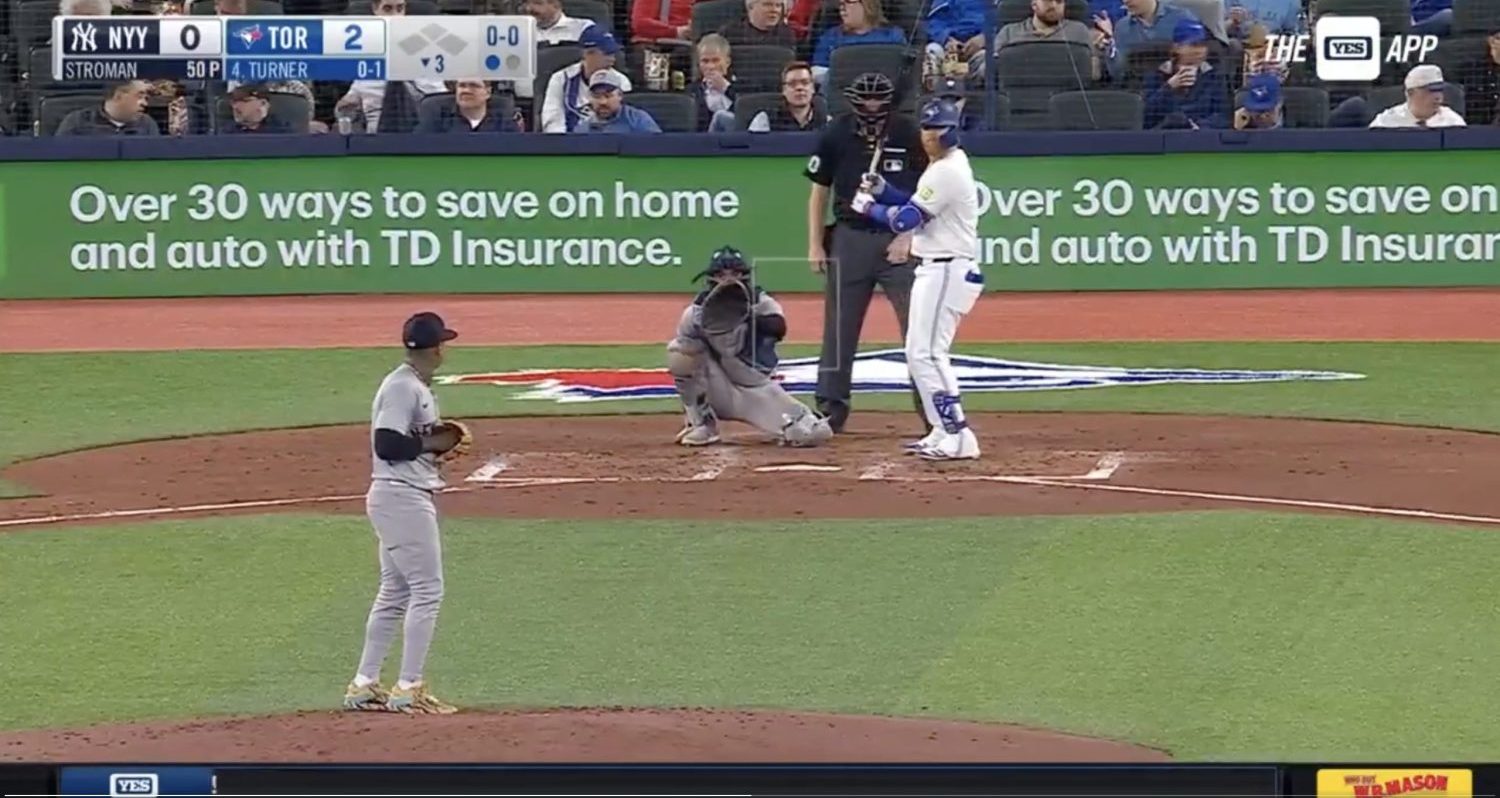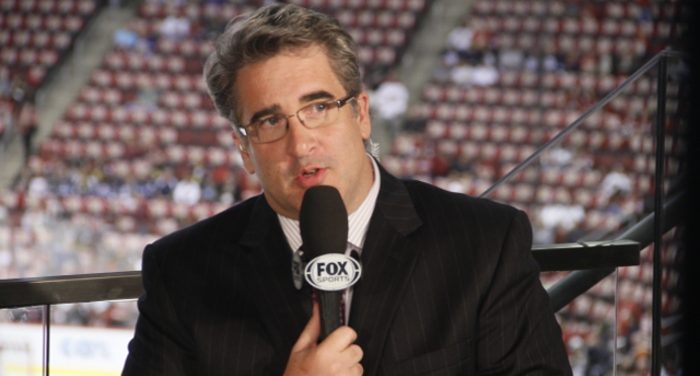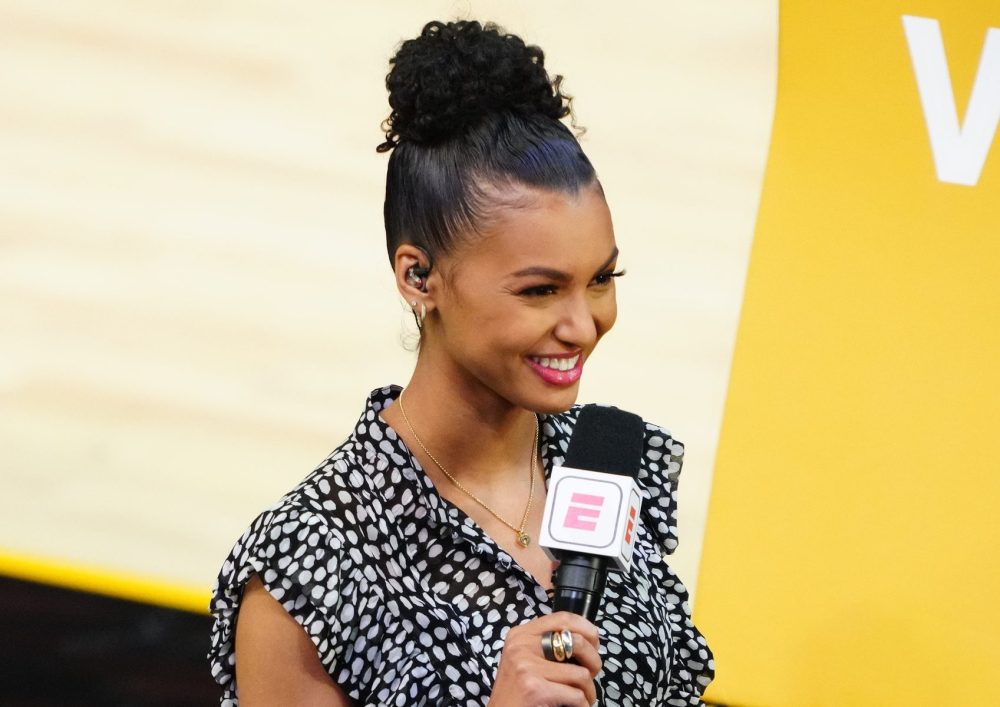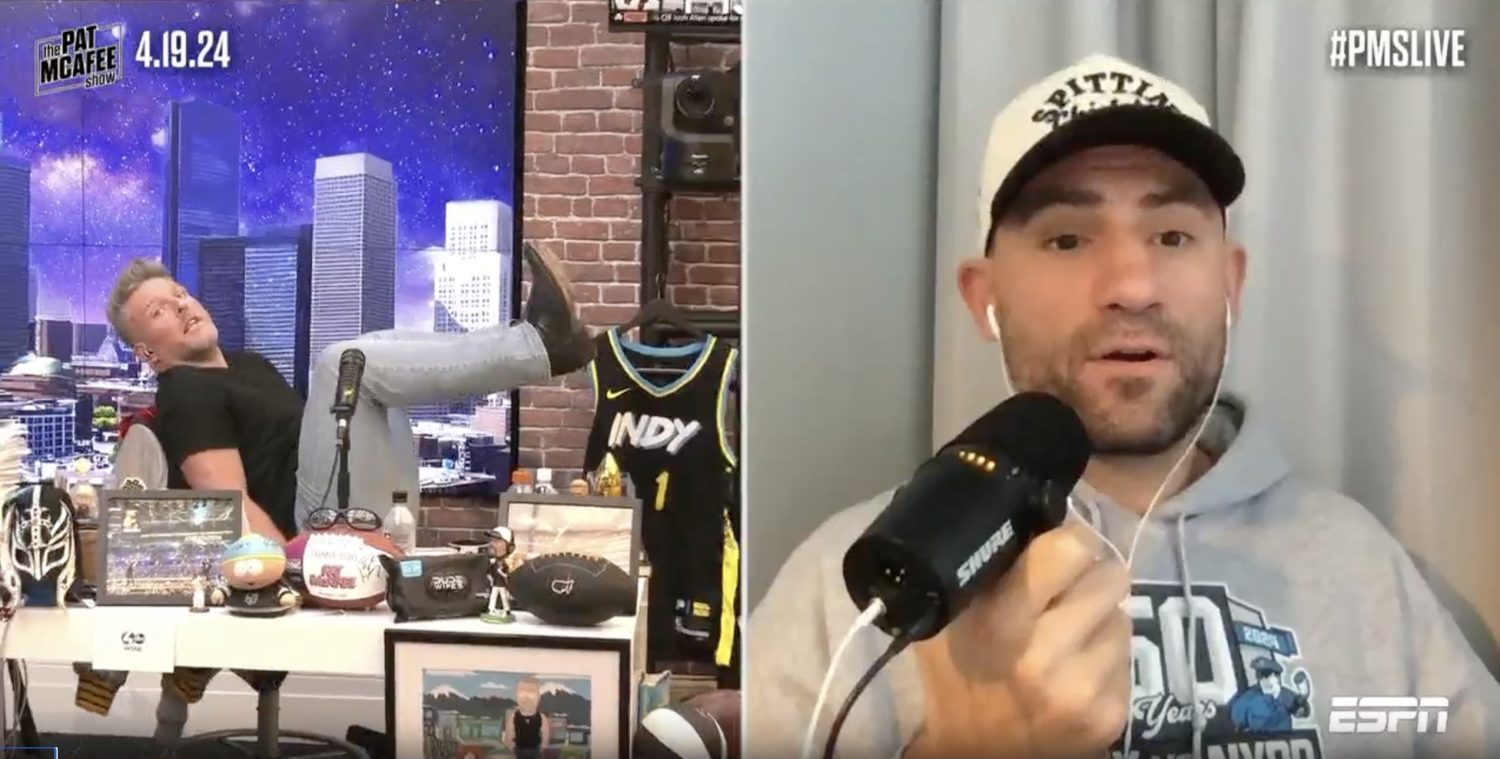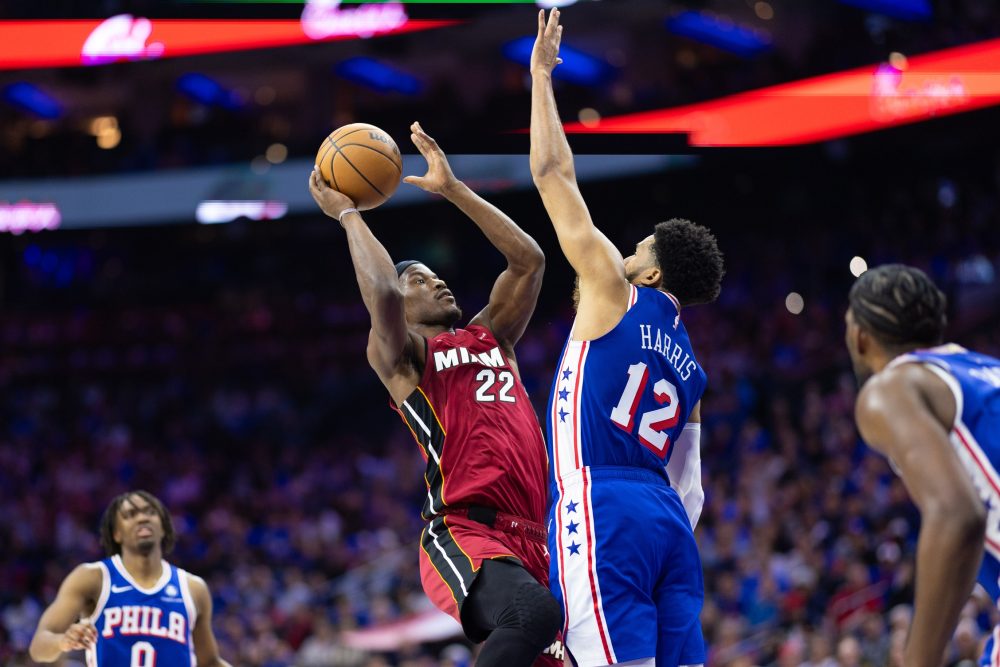While his broadcast partners Jeff Gordon and Clint Bowyer are best known for their racing, it will be Mike Joy who’s taking to the track this weekend.
The play-by-play voice of Fox’s NASCAR broadcasts will be pulling double duty in Sonoma this weekend, taking part in the Historic Trans Am series as a driver before heading into the booth for the NASCAR Cup Series Toyota Save Mart 350.
Joy will be racing a 1966 Ford Mustang that actually raced in Trans Am at the time. Many of these cars are the real deal and were raced by such legends of the sport as Mark Donohue, Dan Gurney, and Parnelli Jones. It’s the kind of throwback race where historical accuracy is the name of the game, and this will be the closest thing to actually getting into a time machine and watching a Trans Am race from the 60s.
Mike talked to Awful Announcing about his love of Historic Trans Am racing, his thoughts on the upcoming Cup race, and about some of his non-racing broadcasting assignments he’s had over his six-decade career. You can check out the Toyota Save Mart 350 this Sunday at 4 p.m. ET on FS1.
(This interview has been edited for clarity.)
Phillip Bupp: You’re doing double duty this weekend with the Cup Series broadcast.
Mike Joy: [Laughter] Yeah kind of.
PB: And racing in the Historic Trans Am series. How did you get in on the on-track racing side of the sport and how often do you get to race?
Joy: Historic Trans-Am, two or three times a year. Fortunately. And then my son and I raced with the BMW Club of America I think we ran three races with them last year. And this year, hopefully the schedule will open up for us and we’ll be able to do some more.
PB: Nice. How competitive can it get on the track?
Joy: Well, the nice thing about vintage racing, other than it being people driving old restored preserved cars, as fast as they ought to, is that there is no contact allowed. In fact, if a driver initiates avoidable contact, he faces a 13-month suspension from the sport. So there’s powerful disincentives to avoid contact, but otherwise the racing can be really, really competitive, but we have to be mindful that we are stewards of history. These are the actual cars that competed in Trans Am in 1966 to ’72. There are no replicas, no tributes, no clones. When you see that number six blue Camaro, a Sunoco Camaro with a black vinyl top, that is the car that Mark Donohue raced at Sears Point (now Sonoma) in 1969.
PB: Sure. I mean, I was watching some of the Monaco historic races, and there were a couple crashes and just thinking the priceless F1 cars being in crashes. Like you said, you got to be mindful of that while still competing, it’s like any other race you’re trying to win.
Joy: Sure. And there’s quite a variance in the cars because they are required to be prepared to the rules that were in effect the year the car was new. So the 1971 Penske Javelin is going to have a whole lot better suspension and better parts and probably more horsepower than any of the cars from say, 1966 or ’67. And the rules evolve too. The car I drive is a ’66 Mustang. And due to the rules of that year, it still has to have its side windows be able to roll up. The backseat is still in place and so are the interior door panels. And a lot of those things went away as the series of evolved over the years, but that’s okay. There’s a wide variety of driver ability and there’s a pretty wide variety of how fast the cars are too. But the great thing is that instead of these cars just sitting in a dusty museum, somewhere, the fans get to come out and see them where they belong, on a track and running at full song.
PB: For sure. And I think it might be a bit of a misconception that people might think that it might be like a half-speed parade type of thing. No, you’re going all out.
Joy: No, this is racing. We expect a lot of lead changes. And certainly for those of us that get to drive these cars and tell their stories, it’s a tremendous amount of fun.
PB: What makes the muscle car era of Trans Am special? You mentioned Mark Donohue, it’s like a who’s who of people in racing back then.
Joy: Well it was because back then nationally, Trans Am was bigger than NASCAR. It received a lot more column inches in the weekly and monthly magazines about automobiles and about racing. And in 1970, something happened that I don’t think we’ve seen before or since. All of the “pony car” manufacturers in America entered teams, factory teams, in Trans Am with top teams and top drivers.
That year, American Motors had Roger Penske and Mark Donohue, Ford’s Mustang was prepared by Bud Moore and driven by Parnelli Jones and George Follmer. Jim Hall of Chaparral fame ran the factory Camaros. Dan Gurney — maybe America’s greatest road racer ever — and Swede Savage drove the AAR (All American Racers) Barracudas that the Gurney shop prepared. And New Englander Sam Posey drove the factory Dodge Challenger. Jerry Titus, who was a MotorTrend editor, raced the Pontiac Trans-Am. Car and Driver (editor) Brock Yates had arrived in the series.
There were a lot of drivers that either ran the series or chose to run a few races in the area near where they were from. But they were big fields and they were hugely attended. Back then, that was absolutely the “Golden Age.” And I was 20 when that happened and very impressionable, and it was like, “Wow, this is something that I can’t [miss]… I want to be a part of.” And now I get to be. So it’s really a lot of fun.
PB: That’s great. Yeah. I mean I’m trying to look back. There isn’t as much, I guess, history preserved when compared to [NASCAR’s] Aero Wars. I mean, my dad has a ’69 Mercury Cyclone Dan Gurney Special. So I know more about the Aero Wars [than Trans Am].
Joy: Oh wow.
PB: Oh yeah. So I know about the Aero Wars, but trying to find information and find video of Trans Am back [in the day]… it’s a bit hard to find.
Joy: The best place to start is historictransam.com. A lot of links and a lot of leads there.
PB: In terms of your commentary… even though your analysts will do a lot to describe what a driver goes through… how important is it for you to still get that driver perspective? Whatever way you can.
Joy: I would like to think that it allows me to ask better questions than someone who’s not been out on track and not been trying to wrestle a 3,000-pound car around a twisting turning road course. Certainly the details of doing that, especially in a Cup car… the viewers want to hear from Jeff [Gordon], who’s won five times [in Sonoma], or from Clint [Bowyer], who’s had great success at Sonoma as well.
I think it helps me to phrase the questions and lead the commentary down a path that’s going to be interesting for the viewer. And so that’s why it’s a big help. Plus it’s a lot of fun. Two weeks ago, we went to COTA (Circuit of the Americas) in Austin, Texas, and out of the three of us, I was the only one who had ever driven the track; because we had raced there seven years ago with Historic Trans Am. So I knew the track, and that was kind of fun to be able to explain to them before we actually get out on the air about different areas of the course that they were going to find really interesting when they got out there in the pace cars, in the rain on Saturday.
PB: Got one up on them. Just going along those lines and pivoting a little bit. What makes racing commentary unique compared to other sports? I ask this because you’ve done other sports in your career, and nothing against someone like Joe Buck, but if he were to maybe do NASCAR, he might struggle a little bit while you would probably be able to go do baseball or football and not skip a beat.
Joy: Well, I did call a Major League game for Fox, and it wasn’t easy, but it was a lot of fun and wished that there had been a path to do more of those. But in racing, the biggest difference is there’s only a couple of scheduled timeouts in a race and there’s more than one ball to follow. There’s 38 to 40 of them. And the action and the story can come from any one of those cars at any moment, depending on what happens during the race. So it’s a whole lot more to be current on and studied up on, because you never know when a certain driver’s going to pop up on the screen and we’re going to have to talk about it.
Generally in baseball and football, you have a much better idea because there’s only one ball to follow of which way the play is going and what the commentary and what the replays are going to be. In auto racing it’s on; I mean, it can be a three-and-a-half hour trainwreck. You just don’t know where the storyline is going to take you. You’ve got a pretty good idea. You’ve got some things teed up, but you have to be prepared for anything.
PB: Now you’ve mentioned you’ve done baseball. For those who might only know you for your motorsports broadcasting, what other sports have you called in your career? And do you have a favorite non-racing sport or moment that you’ve been a part of?
Joy: Well, I grew up a Yankees and a Cubs fan based on where we lived and where my grandparents live. So that made it pretty easy to be a student of baseball and memorize stats and follow the game very, very closely growing up, but I’ve done Major League Baseball, college football. And when I was at CBS, because of the Final Four contract, CBS had to do taped coverage of the final round of all Division I sports. So I got a wide exposure of gymnastics, swimming and diving, track and field, lacrosse, and World Cup skiing. So quite a wide variety.
I was in CBS one day and Ted Shaker was the executive producer. And I said, “You know, Ted, I’d like to do some more things besides auto racing.” And he said, “Alright.” He says, “You ever hear of a guy named Pirman Zurbriggen.” And by unbelievable chance the night before or that weekend before, I had difficulty getting to sleep. And I just happened to be on a World Cup skiing show and watching it on TV in the hotel. And I said, “Sure, he’s the first since Gustavo Thoeni in 1949 to excel at all four disciplines of World Cup skiing. And I rattled them off and he went, “Where are you going to be in three weeks?” I said, “Where do you want me?” And I was on a plane to Geneva to do [Zurbriggen’s] retirement race up there in the Swiss Alps. So you just never know what’s going to happen. What’s going to happen next. That was probably the most fun assignment that I ever had at CBS. But yeah, as a kid, I was a baseball fan and still am.
PB: I think that’s why a lot of people are envious of about you having a real encyclopedia of knowledge and especially during the Fox broadcast, you’re just spitting out facts left and right. And impressing everyone.
Joy: Well some of those are facts I have in my head. And fortunately we have a great stat team as I’m sure all really good broadcast booths do. But these days our stats boys are connected to a server farm. And so much of this data. And so much of the sports history is now computerized and all a lot easier to pull up or, or pull out, than it used to be. I mean, yeah, everybody knows Richard Petty has 200 wins and David Pearson has 105 and Jeff Gordon has 93. But if you ask people to go much deeper than that, it gets harder in a hurry. And that’s why we’re glad NASCAR finally has a Hall of Fame where we can honor the accomplishments of the early drivers in these four exam, the modern ones, and kind of bring that more to the present day fan.
(Going back to differences in racing commentary to stick and ball sports) I think the hardest thing about broadcasting auto racing is… let’s say you’re doing a baseball game and a pitcher gives up a home run. You can see it all in his face and in the slump of his shoulders. And you can see the elation of the batter running the bases after hitting that ball. In auto racing, if a driver makes a good pass, or if he misses a corner in the car and slides up the racetrack, all you see is the car. You don’t really get a sense of the emotion of a sport as it’s happening. That’s very hard to convey. That’s why we have really good analysts, because they can tell you exactly what happened and what it felt like.
PB: Oh yeah, it’s more subtle. You see a 500-mile race… we might see it on TV as a regular Sunday drive… but they’re slipping and sliding all around. It’s 500 miles of tense competition, there. There’s nothing easy about it.
Joy: It really is. And [laughter] as Jay Leno said on our telecast, when he visited last week, he said, “Racing cars is like sex. All guys think they’re good at it.” You know? And that includes people who’ve never raced. They all think that because they raced to work on Monday morning and passed cars doing it, that they could jump in these cars and be a hero. That’s one thing I can tell you firsthand, it’s hard. You take something that is literally sliding on its four tires on the edge of, or just barely out of control and try to bend it to your will, with 500, 600 horsepower beneath you. That’s work. That’s, I mean, it’s really enjoyable when you get it right. And it’s really demoralizing when you get it wrong.
PB: It’s hard enough for me on iRacing and I’m not in the heat and undergoing the conditions they’re in [laughter].
Joy: I always said, iRacing would be tremendous. It would be so realistic. All you need is a small sledgehammer and a stack of hundred dollar bills. So that every time you hit the wall, you can take the sledgehammer and bang the side of your helmet and you can take [away] half a stack of the hundred dollar bills, and you’ll have close to real racing.
.@mikejoy500 on why we take such care to remember and honor those who paid the ultimate price for our nation's freedom. pic.twitter.com/XTtYdI57qV
— FOX: NASCAR (@NASCARONFOX) May 31, 2021
PB: [Laughter] For sure. Now you’ve done just about anything and everything on the NASCAR side of commentary for the past 45 years. You’re still doing new things with the Bristol dirt race and the iRacing broadcasts. Is there anything that you haven’t done yet that you would like to do?
Joy: Wow… wow… I would love to do a show for Fox that takes vintage race cars and shows people just how important, just how exciting that that aspect of the sport is. And maybe do it with current or recent drivers and put them behind the wheel of a vintage car, and then a current car and have them race both on the same track on the same day and compare the experiences. I think that would be pretty tremendous. And I think we could do with Trans Am. The current Trans Am series and historic Trans Am, occasionally they do race together at the same track. And I think that would make a heck of a show.
We could do it with NASCAR, do it with the current cars in NASCAR. And also with many of the historic cars from the 80s are all restored and they’re ready to go. They’re ready to race. The problem is a lot of them all have fresh Hendrick or Roush/Yates engines in them. They’ve all been in the wind tunnel. They’ve all been massaged. And as far as vintage pieces go, they’re like George Washington’s hatchet. It’s had seven different heads and eight different handles, but by gosh, that’s the one. They’ve all been improved beyond limitation.
PB: I’ll get you out of here on this. This Sunday is the race in Sonoma, what should we expect to see on Sunday and for the rest of NASCAR season?
Joy: I think… I couldn’t say this even 10 years ago, but I think the core of NASCAR’s elite drivers have become really good road racers. Now passing on a course like Sonoma is very difficult. You almost have to catch the driver ahead of you making a mistake in order to make a clean pass without contact. But it’s a really fun course to drive. There are probably three really good passing zones under braking or coming off the corner. Being on the track is in some places it’s a chore. It’s difficult. There’s a couple of blind rises and exits to corners where you’re not sure where the edge of the asphalt is. So it’s more a test of man than it is the machine, because the machines are very, very durable. So I think whoever has a good safe race and can take advantage of opportunities has the best chance of ending up in victory lane.
[Photo: Fox Sports]


